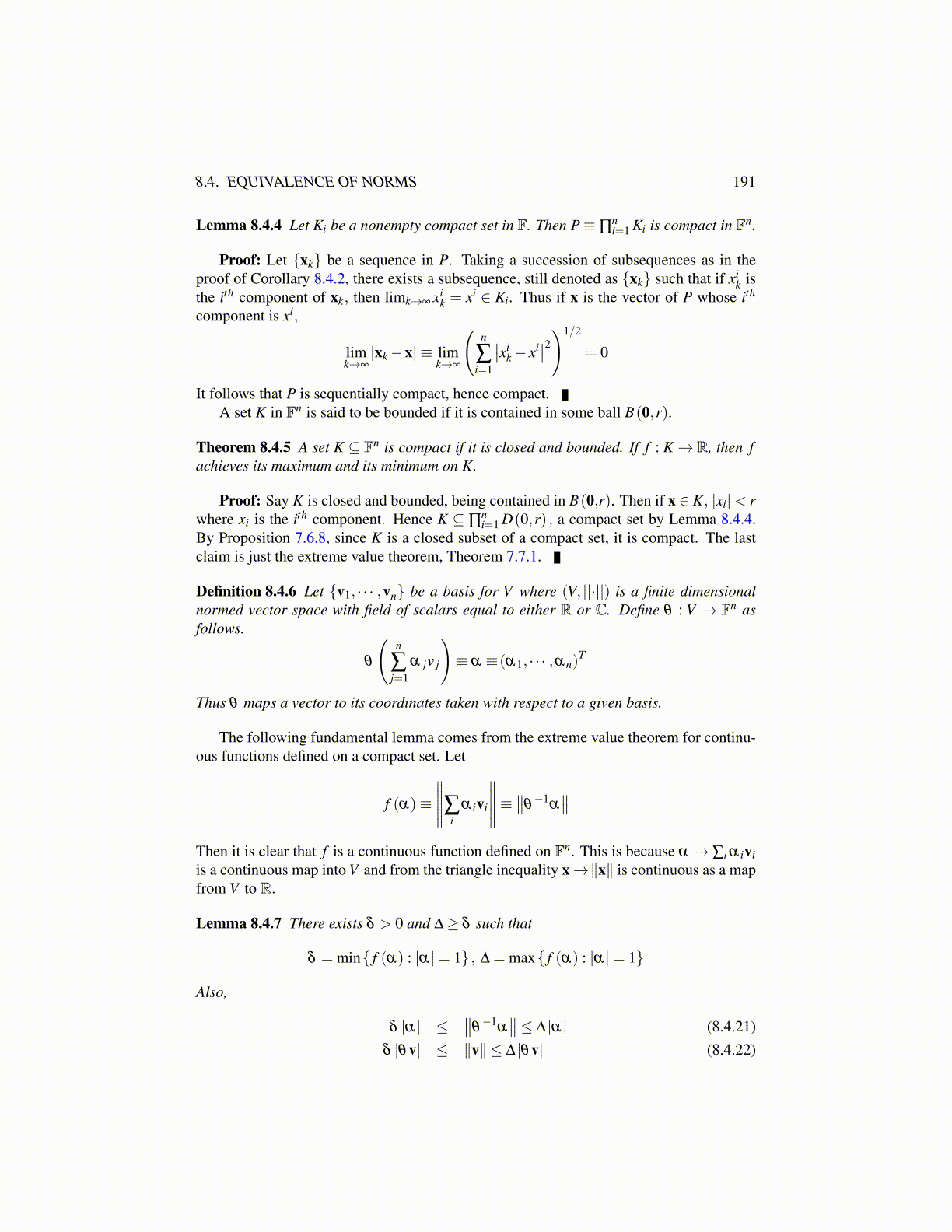
8.4. EQUIVALENCE OF NORMS 191
Lemma 8.4.4 Let Ki be a nonempty compact set in F. Then P≡∏ni=1 Ki is compact in Fn.
Proof: Let {xk} be a sequence in P. Taking a succession of subsequences as in theproof of Corollary 8.4.2, there exists a subsequence, still denoted as {xk} such that if xi
k isthe ith component of xk, then limk→∞ xi
k = xi ∈ Ki. Thus if x is the vector of P whose ith
component is xi,
limk→∞
|xk−x| ≡ limk→∞
(n
∑i=1
∣∣xik− xi∣∣2)1/2
= 0
It follows that P is sequentially compact, hence compact.A set K in Fn is said to be bounded if it is contained in some ball B(0,r).
Theorem 8.4.5 A set K ⊆ Fn is compact if it is closed and bounded. If f : K→ R, then fachieves its maximum and its minimum on K.
Proof: Say K is closed and bounded, being contained in B(0,r). Then if x ∈ K, |xi|< rwhere xi is the ith component. Hence K ⊆ ∏
ni=1 D(0,r) , a compact set by Lemma 8.4.4.
By Proposition 7.6.8, since K is a closed subset of a compact set, it is compact. The lastclaim is just the extreme value theorem, Theorem 7.7.1.
Definition 8.4.6 Let {v1, · · · ,vn} be a basis for V where (V, ||·||) is a finite dimensionalnormed vector space with field of scalars equal to either R or C. Define θ : V → Fn asfollows.
θ
(n
∑j=1
α jv j
)≡ α ≡(α1, · · · ,αn)
T
Thus θ maps a vector to its coordinates taken with respect to a given basis.
The following fundamental lemma comes from the extreme value theorem for continu-ous functions defined on a compact set. Let
f (α)≡
∥∥∥∥∥∑iα ivi
∥∥∥∥∥≡ ∥∥θ−1
α∥∥
Then it is clear that f is a continuous function defined on Fn. This is because α → ∑i α iviis a continuous map into V and from the triangle inequality x→∥x∥ is continuous as a mapfrom V to R.
Lemma 8.4.7 There exists δ > 0 and ∆≥ δ such that
δ = min{ f (α) : |α|= 1} , ∆ = max{ f (α) : |α|= 1}
Also,
δ |α| ≤∥∥θ−1
α∥∥≤ ∆ |α| (8.4.21)
δ |θv| ≤ ∥v∥ ≤ ∆ |θv| (8.4.22)